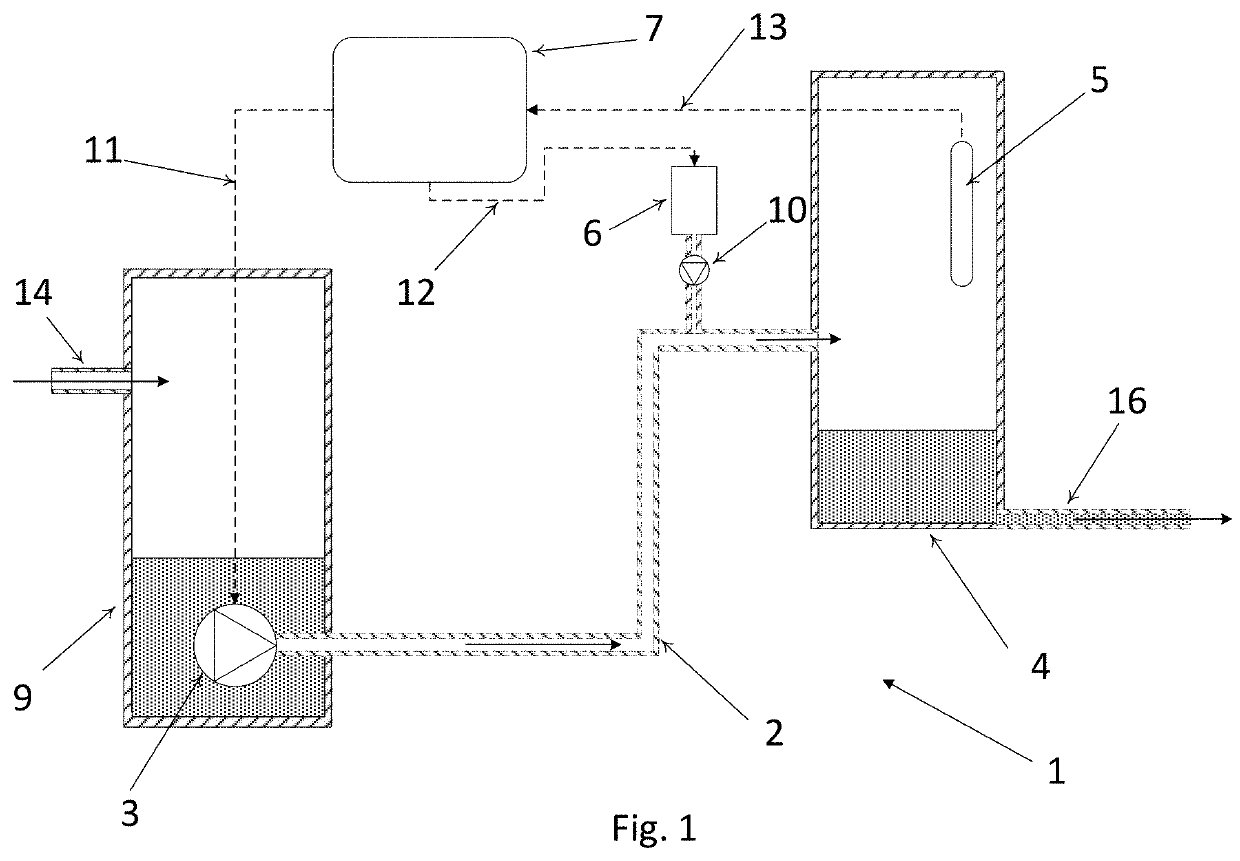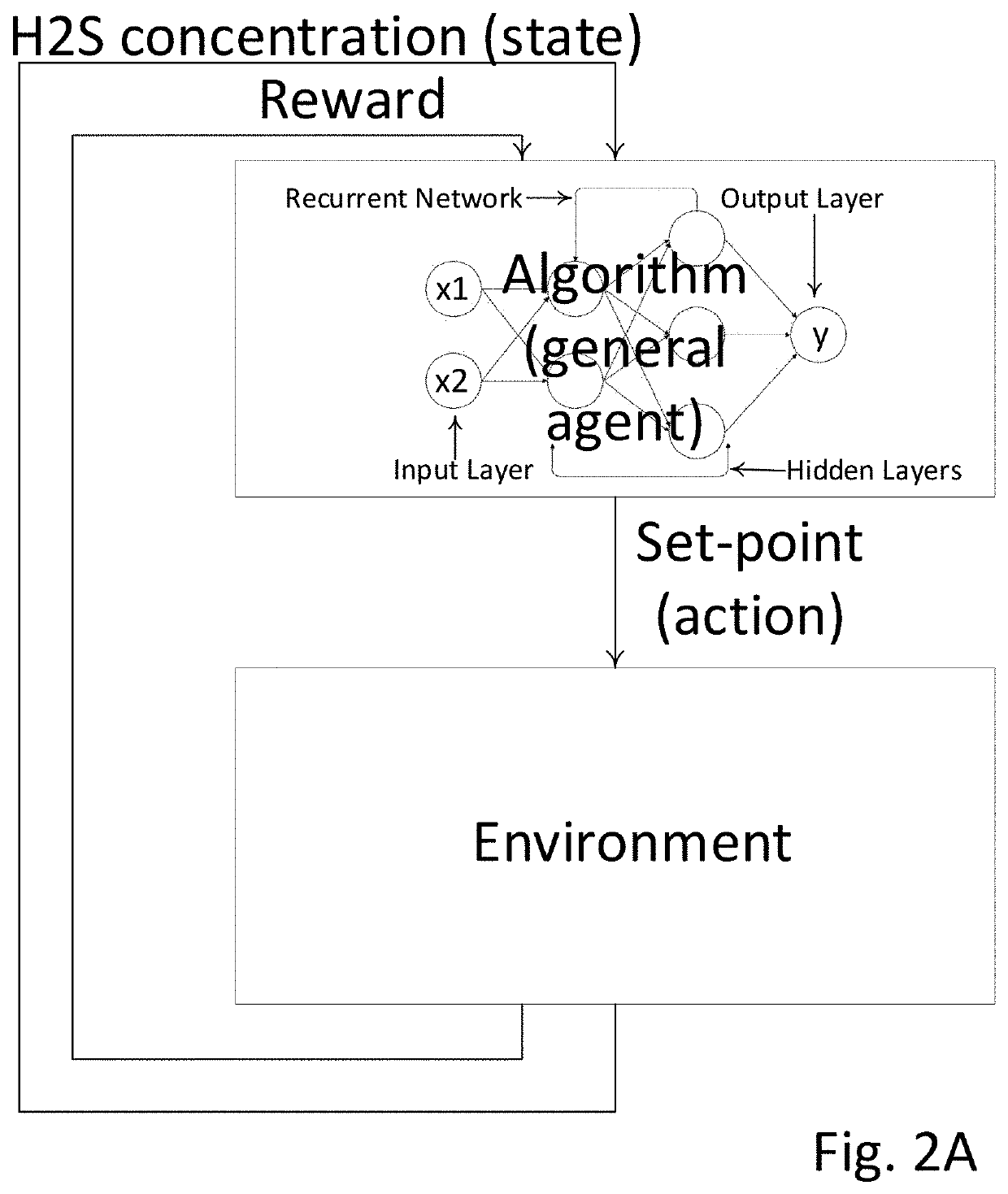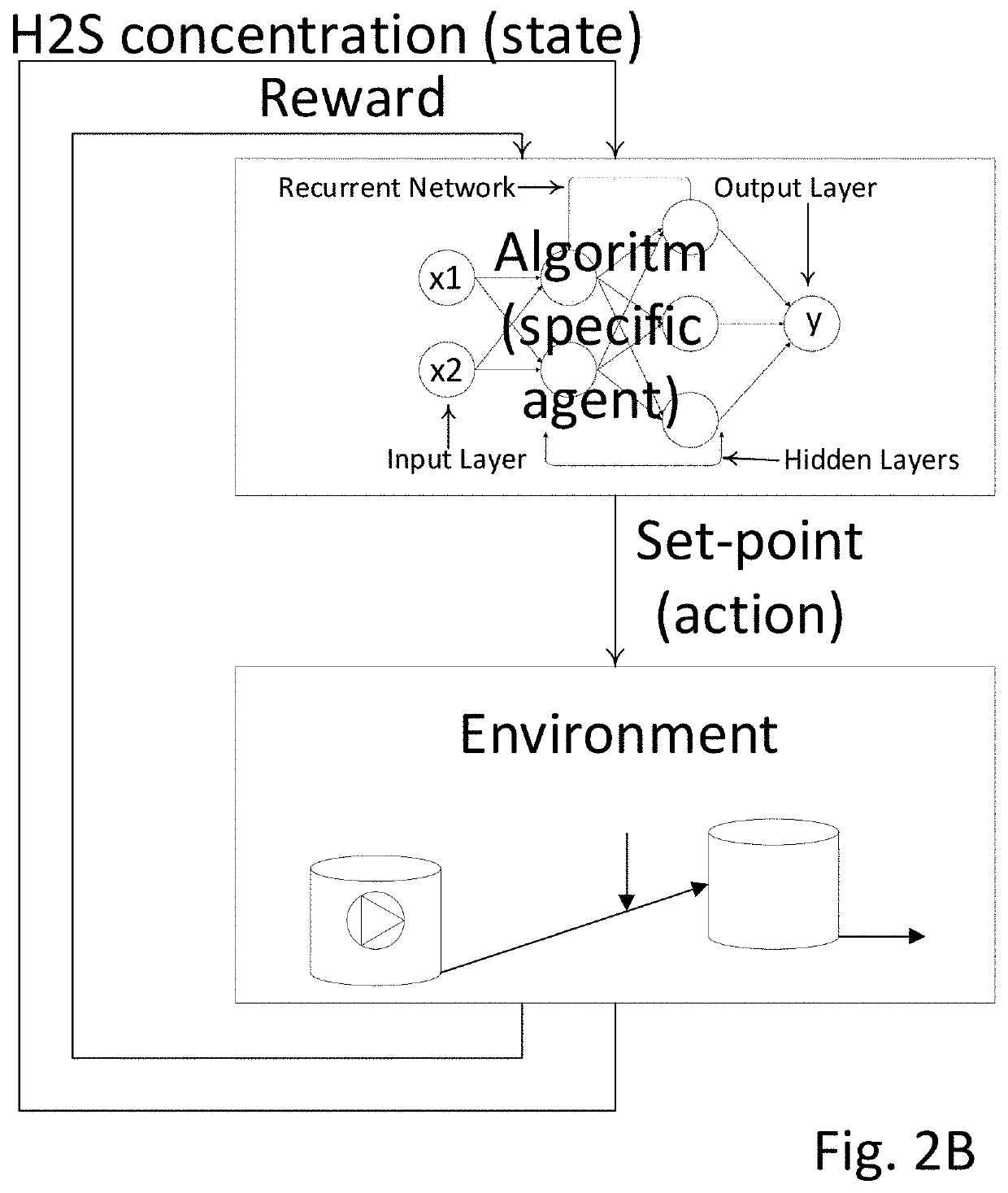Reinforcement learning for h2s abatement
a technology of reinforcement learning and abatement, applied in the field of reinforcement learning for h2s abatement, can solve the problems of sulphide not being a viable option, supervised learning not being suited to this type of problem, and often not being able to solve the problem of sulphide, so as to avoid the amount of sulphide
- Summary
- Abstract
- Description
- Claims
- Application Information
AI Technical Summary
Benefits of technology
Problems solved by technology
Method used
Image
Examples
Embodiment Construction
[0100]Reference is made to FIG. 1 schematically illustrates a wastewater network 1 according to a preferred embodiment of the invention. The figure shows various parts in cross sectional views. FIG. 1 is not drawn in a physical scale which is indicated e.g. by the pumping main being drawn with broken lines. As illustrated, the wastewater network 1 comprises an upstream pumping pit 9 inside which a pump 3 is arranged. The pumping pit 9 has an inlet 14 through which wastewater, such as sewage water is fed into the pumping pit 9. The grey shaded area inside the pumping pit 9 indicates the filling level of the pumping pit 9.
[0101]The upstream pumping pit 9 is fluidicly connected with a downstream manhole 4 (which may be a pumping pit) through a pumping main 2 which is a piping inside which wastewater fluid flows. The downstream manhole 4 comprises an outlet 16 through which wastewater can leave the manhole 4. Also in this case, the grey shading indicates the filling level in the manhole...
PUM
 Login to View More
Login to View More Abstract
Description
Claims
Application Information
 Login to View More
Login to View More - R&D
- Intellectual Property
- Life Sciences
- Materials
- Tech Scout
- Unparalleled Data Quality
- Higher Quality Content
- 60% Fewer Hallucinations
Browse by: Latest US Patents, China's latest patents, Technical Efficacy Thesaurus, Application Domain, Technology Topic, Popular Technical Reports.
© 2025 PatSnap. All rights reserved.Legal|Privacy policy|Modern Slavery Act Transparency Statement|Sitemap|About US| Contact US: help@patsnap.com



